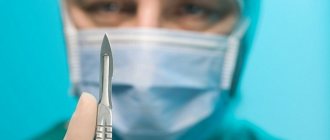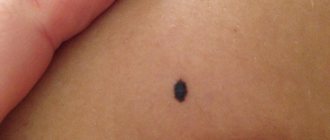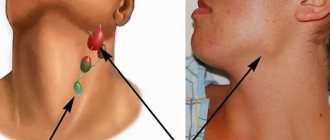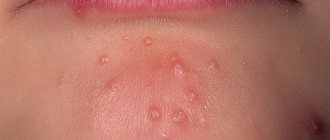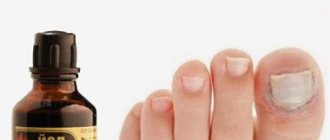Testicles are male reproductive glands located in the scrotum (lat. Scrotum). Their task is to produce male sex hormones and male gametes. Inside the scrotum, in addition to the testicles, there are blood and lymphatic vessels and nerves.
The scrotum and testicles are located outside the body to keep them at a lower temperature than inside the body. It is very important for fertility and sperm function. After the 28th week of pregnancy, the testicles of a male fetus begin to descend from the abdominal wall into the scrotum.
Due to external influences and complex anatomy, a man may develop a lump or nodule in a small area of the testicle. The reason for the formation of a lump on the testicle can be different.
Causes of nodules in the testicles
Lumps in the testicles are a very common symptom due to a number of reasons leading to this condition. Most do not require medical intervention and are not serious illnesses. But there are also certain conditions that require urgent treatment.
On the other hand, in the case of testicular cancer, early detection of symptoms leads to a significantly better prognosis.
Regular self-examination is recommended (at least once every three months).
Causes of nodules on the testicles:
- Injury – blows to the testicles cause edema (swelling) and may contribute to the formation of lumps. If the injury is too severe, more serious problems may arise, so a visit to the doctor is recommended.
- A special type of injury is testicular torsion (testicular rotational injury), which damages the blood and lymph vessels, nerves and vas deferens, leading to the formation of a tumor (requiring medical intervention).
- A hydrocele is an accumulation of fluid in the scrotum and enlargement of the testicles (often does not require medical intervention).
- Varicocele is an enlargement of the veins that drain blood from the testicles. As a result, superficially visible nodules or edema (swelling) are formed. It is not always visible and can only be felt. It is one of the most common causes of testicular tumors, with an estimated one in six men suffering from varicocele. Medical intervention is required in both symptomatic and acute forms.
- Cysts are accumulations of fluid in the testicles that form a growth. Treatment may or may not be required.
- Epididymitis is inflammation of the epididymis. Causes redness, pain, heat, thickening of the epididymis, testicular orchitis - pain and swelling. Antibacterial therapy is prescribed or symptomatic treatment is carried out.
- An inguinal hernia is the passage of abdominal structures through the same passage through which the testicles and related structures passed during the prenatal period. An inguinal hernia can descend into the scrotum and lead to their enlargement. The hernia should only be treated surgically.
- Testicular tumors are the most severe case. It can cause lumps on the testicles. Early detection can provide a better prognosis. Often the lump is felt when swimming or showering. The tumor grows quickly, causing pain, possible bleeding, erythema (redness of the skin), and fever.
Wen: what is it?
A fatty tissue is a neoplasm that consists of adipose and connective tissue, can have different sizes and can be easily felt through the skin. A ball on the skin of the scrotum can be detected during the development of the inflammatory process. Then education becomes painful. When pressed, the fatty tissues roll freely under the skin. These are usually white balls that can reach a size of five to thirty millimeters. If there is no inflammation, then the biggest problem from wen is a cosmetic defect.
Symptoms of a lump on the testicles
In addition to the nodules themselves, it is especially important to note that there are certain accompanying symptoms. They can help in diagnosis:
- upon palpation, you can feel the consistency of the formation (liquid or hard);
- possible blood in the urine;
- erythema (redness of the skin);
- pain and tingling in the testicles;
- heat;
- nausea.
When visiting a doctor, it is important to list all the symptoms you observe. The doctor may not notice on his own.
Pain and increase in size of the scrotum
The main symptoms of testicular cancer are pain and enlargement of the scrotum.
Pain may appear in the scrotum area; it can be either aching or dull. Characteristic pain in the lower abdomen, which begins with varying strength, may not last long.
Sometimes heaviness appears in the lower abdomen. Pain is observed in the affected testicle. In addition, it is necessary to pay attention to uncharacteristic back pain. They can also be a symptom of developing testicular cancer.
When the cancer has already progressed, the scrotum swells and becomes asymmetrically enlarged.
Fatigue, weight loss, low-grade fever
Testicular cancer is characterized by signs such as a slight increase in body temperature, weakness, deterioration in emotional state, and depression. The patient's appetite decreases, dizziness may appear, and fatigue increases sharply. A feeling of fatigue appears even after minor exertion. Weight is decreasing. The temperature stays around 37.5, sharp jumps are usually not observed.
Treatment of testicular nodules
Treatment primarily depends on the cause.
Inflammation caused by sexually transmitted diseases is treated with medications (corticosteroids), and an accurate diagnosis is important.
Hydroceles, varicoceles and cysts are treated symptomatically or with antibiotics, and in some cases with surgery.
Hernia can also be treated surgically.
Testicular cancer is the most serious medical problem. Its treatment requires surgery and post-operative treatments such as chemotherapy and radiation therapy. If detected early, the prognosis is very good.
Symptoms of testicular cancer when it has metastasized
Symptoms of testicular cancer when metastases are already occurring require special attention. Characterized by shortness of breath, cough, jaundice, sharp pain in the right hypochondrium. It all depends on where exactly the cancer metastasizes.
Most often, testicular cancer metastases go to the lungs, bone marrow, bones, skin, and liver.
Testicular cancer causes dyshormonal symptoms. Then frequent erections and voice mutations in boys are observed. Hair on the body and face may begin to grow sharply and prematurely. Adult men in such cases are characterized by decreased libido and impotence. Sometimes the breasts become enlarged.
When testicular cancer metastasizes to the lymph nodes in the mediastinum, this can cause shortness of breath and cough. During the process of intoxication, a sharp loss of appetite and nausea are noted. The legs swell due to blockage of the inferior vena cava and lymphatic ducts. If the ureters are already subjected to compression, renal failure and hydronephrosis may develop.
Intestinal obstruction as a symptom of testicular cancer begins due to compression of the intestine. In the process of squeezing the nerve roots, sharp pain appears in the back.
How to examine the testicles?
Examine the testicles while showering because the warm water will soften the scrotum, making it easier to feel the inside of the testicles.
During a self-exam, first look for a tumor on the testicle. Edema or swelling may be an important symptom. It is important to note that one testicle can (and very often) be larger than the other. Look for a hard lump or swelling of the skin.
Examine each testicle separately and then compare them. With both hands, gently grasp the testicles with your thumb and forefinger. Both testicles should be smooth.
The hard lump should not be confused with the epididymis, located on top and behind each testicle. If you notice a hard lump anywhere else on your testicle, you should see a doctor as soon as possible.
An additional sign to look out for is severe pain. It may indicate torsion, injury, or infection (inflammation). Also during self-examination, you may notice a varicocele - an enlargement of the veins in the upper part of the testicles. It appears as nodules or growths under the surface of the skin.
Diagnostics
Diagnosis of a lump on the scrotum should begin with a trip to the doctor. During the examination, the doctor will feel the scrotum and determine the presence of balls on the man’s testicle, their number, location, shape and size. An experienced doctor will be able to understand by the appearance of the formation what type of tumor the patient has.
To confirm the diagnosis, the doctor will prescribe a number of tests, such as:
- blood test for tumor markers;
- general blood analysis;
- blood chemistry;
- spermogram.
These tests will help find signs of an inflammatory or tumor process, as well as traces of the proliferation of viruses or bacteria.
Next, the doctor will prescribe a number of instrumental studies, such as:
- diaphanoscopy – transillumination method;
- Ultrasound of the scrotum;
- MRI;
- biopsy.
Diaphanoscopy of the testicle
Traditional methods
In some cases, the formation of a wen is associated with the formation of atypical fat cells. In this case, treatment can be carried out using traditional methods, and surgical intervention is usually not required. Before starting treatment at home, consultation with a specialist is mandatory.
You can remove the wen using a fresh Kalanchoe leaf. You need to cut the plant and apply it to the damaged area, securing it with a bandage. The bandage needs to be changed approximately once a day. The course of treatment is usually not too long. It takes about one to two weeks for the fat to disappear on its own.
You can use coltsfoot dressings for ten days. The sheet should be applied to the sore spot and changed as needed. Lamb fat is quite effective. A tablespoon of the product is melted in a water bath and then cooled to room temperature. Then a small amount of fat is applied to the wen area and massaged a little. After just a couple of procedures, you can notice that the tumor becomes smaller.
Judging by the reviews, cosmetic red clay, which is mixed with sour milk and salt to enhance the effect, helps a lot. The mixture is applied to the wen, after which you need to protect the damaged area with a piece of polyethylene. The procedures must be repeated until the wen completely disappears.
You can take burdock root internally. First you need to pass the plant through a meat grinder (500 g is enough) to get a paste. Next, the slurry is poured with 700 ml of vodka, and then left to infuse for about a month. When the infusion is ready, you need to take one tablespoon twice a day.
External manifestation
It is not difficult to notice a wen on the scrotum. Such neoplasms are easily palpable and diagnosed during a standard examination. A characteristic sign of the accumulation of sebaceous gland secretions under the skin is the appearance of a wen, resembling a small pea that easily rolls under the skin. Wen are rarely painful, but if an inflammatory or purulent process occurs, they begin to cause discomfort. Sometimes discomfort can occur due to friction with clothing or as a result of injury.
If a ball is found in the scrotum, you should consult a specialist to determine that the neoplasm is truly a safe wen. Alarming symptoms are pain, rapid increase in the size of the formation, sudden disturbances in the genital area or difficulty urinating, discomfort when walking due to friction with clothing. Any of these signs should alert a man.
Treatment of a lump in the groin of a man
Doctors carry out therapy, the main goal of which is to eliminate the pathogenetic factor. If necessary, the patient is hospitalized, conservative (drug) therapy is used, or surgery is performed (as indicated).
If you find a lump in your groin, you should not delay visiting a doctor. Most problems can be successfully treated. The medical office is attended by qualified, experienced doctors who prescribe only the necessary diagnostic tests and, based on their results, develop an individual effective treatment plan.
Urologist in Lipetsk: +7 (4742) 90-40-50, and you can also make an appointment online
Classification. Types of testicular tumors
Testicular tumors are very diverse in their cellular structure, but 90–95% of them belong to the group of germ cell tumors:
- intratubular neoplasia;
- yolk sac tumor;
- seminoma;
- teratoma;
- trophoblastic tumor (choriocarcinoma);
- embryonal cancer;
- mixed tumors
The remaining 5–10% are benign and malignant Leydig or Sertoli cell tumors, adult and juvenile granulosa cell tumors, theca fibromas and mixed ones.
Giving rise to cancerous invasion - the penetration of cells through the restrictive basement membrane - intratubular neoplasia (TIN) or carcinoma in situ is often found in the surroundings of a testicular tumor, and in 2-5% of patients it is found even in a healthy testicle, so its treatment is very serious. Since four out of 10 germ cell tumors are seminomas, and the rest are all other histological types with the same response to treatment, all testicular germ cell tumors (GCTs) are clinically divided into two groups: seminomas and non-seminomas, which are treated differently.
